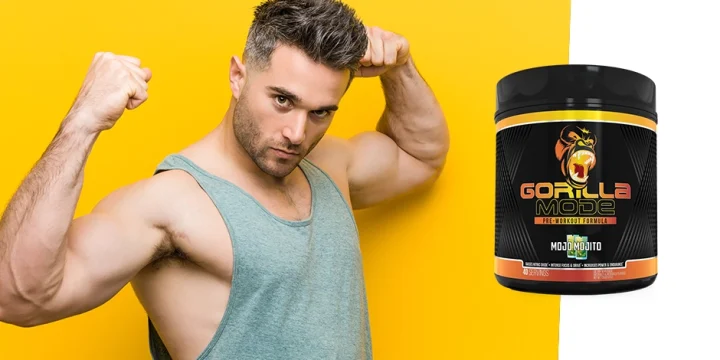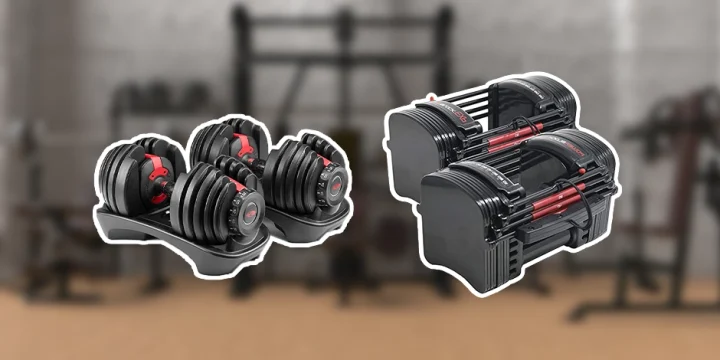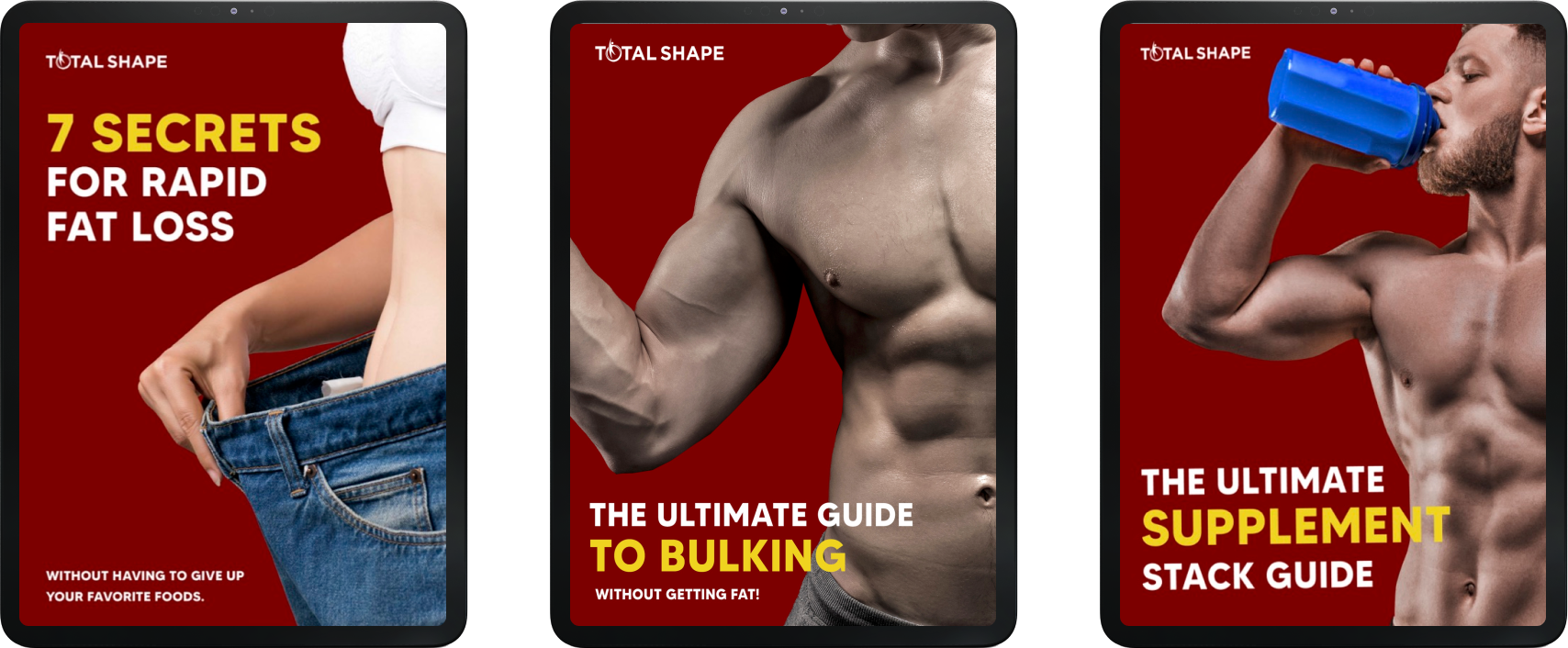In my 9+ years as a professional fitness coach, clients thought spending more time in the gym was better for their gains.
However, this is not true, as rest is essential to fitness training. A 3-day split is effective as it lets you work out and gives you enough time to rest.
I worked closely with colleagues and devised this guide to the best 3-day split workout routine to follow and attack your muscles best.
Keep on reading to explore the topic with me.
Quick Summary
- The 3-day workout split allows you to maximize the volume of your workouts and your body's recovery, resulting in fantastic results for both strength and hypertrophy without spending too much time in the gym.
- Several exercise routines may be used for a 3-day split, including push-pull leg, upper body-lower body, and full-body three-day split.
- According to studies published by Sports Medicine, exercising each body part twice or three times weekly works better for most individuals with the most goals than working out each body part once per week.
- As a seasoned fitness coach, I've observed that a 3-day workout split consistently delivers impressive results in strength and muscle development, making it my top recommendation.
The Best 3-Day Workout Split

Full-body Workout Split
The full-body 3-day split is among the most well-known and tested workout routines ever.
The version illustrated below is the most typical, in which the workouts are completed every other day with two days' rest at the end.
- Monday: Full Body Workouts
- Tuesday: Off
- Wednesday: Full Body Workouts
- Thursday: Off
- Friday: Full Body Workouts
- Saturday: Off
- Sunday: Off
The workouts:
Full-body A
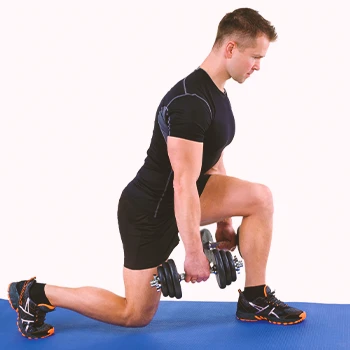
- 5 sets of 3 to 6 repetitions of flat barbell bench press or barbell floor press
- 3 sets of 8 to 15 repetitions of dumbbell split squats or barbell lunges
- 3 sets of 8 to 10 repetitions of horizontal cable rows
- 3 sets of 8 to 12 repetitions for Good Mornings or Hyperextensions
Full-body B
- 5 sets of 4 to 6 repetitions of barbell or dumbbell bent-over rows
- 3 sets of 8 to 15 repetitions of barbell front squats
- 3 sets of 8 to 10 repetitions of barbell or dumbbell incline bench press
- 3 sets of 8 to 15 repetitions of barbell stiff-legged deadlifts or Romanian dumbbell deadlifts
Push Pull Legs Split

"Push-pull-legs is a workout split usually divided into three or six days. You could do three days a week — one pull-dominant day, one push-dominant day, and one all-leg-dominant day — and if you want to, you may cycle it into six days [a week] and do each day twice."
- Tom Hall, Third Space Elite Trainer
They may be done on any day of the week, although one rest day between pulling and pushing days is preferable, as are two rest days following leg day.
- Monday: Push
- Tuesday: Off
- Wednesday: Pull
- Thursday: Off
- Friday: Legs
- Saturday: Off
- Sunday: Off
It separates the body into three workouts:
- The push workout routine involves exercising all upper body muscles involved in "pushing" activities. The chest, triceps, and shoulders are all included.
- The pull workout routine involves exercising all upper body muscle groups involved in "pulling" activities. This involves the biceps and back in particular.
- The leg workout comprises exercising all the lower muscle groups involved in "leg" activities. The quadriceps, glutes, hamstrings, and calves are all included.
The workouts:
Push

- 4 sets of 4 to 6 repetitions of dumbbell bench press or incline barbell bench press
- 3 sets of 6 to 10 repetitions of dumbbell seated shoulder press or barbell push press
- 3 sets of 6 to 10 repetitions of barbell close-grip triceps extensions or barbell tricep extensions
Pull
- 4 sets of 4 to 10 repetitions of deadlifts or snatch grip deadlifts
- 3 sets of 6 to 10 repetitions of pull-ups or cable rows
- 3 sets of 8 to 12 repetitions of dumbbell-seated bicep curls or barbell preacher curls
Legs
- 4 sets of 4 to 6 repetitions of barbell front squats/lunges
- 3 sets of 6 to 10 repetitions of Romanian deadlifts or barbell good mornings
- 3 sets of 6 to 10 repetitions of the standing calf raise with a barbell
- 3 sets of 8 to 15 repetitions of weighted crunches or weighted hanging leg raises
Upper/Lower Split

The upper-body/lower-body exercise split differs from the other recommended workout splits discussed in this article.
This is because, instead of separating the target muscles over three sessions, this merely divides them into two.
Upper-body workouts comprise all upper-body muscle groups, while lower-body activities include all of the muscle groups in the lower body.
This exercise split can be considered a three-day workout split because you can alternate your sessions.
Week 1
- Monday: Upper Body Workout
- Tuesday: Off
- Wednesday: Lower Body Workout
- Thursday: Off
- Friday: Upper Body Workout
- Saturday: Off
- Sunday: Off
Week 2
- Monday: Lower Body Workout
- Tuesday: Off
- Wednesday: Upper Body Workout
- Thursday: Off
- Friday: Lower Body Exercise
- Saturday: Off
- Sunday: Off
You will continue alternating this way from week to week.
Regarding the schedule, the version indicated above is the most typical, with the workouts completed every other day and two days resting after the end.
Of course, the days you pick are fine as long as the same structure is maintained.
This is yet another exercise split that can be tailored to almost any objective or degree of expertise.
The workouts:
Upper
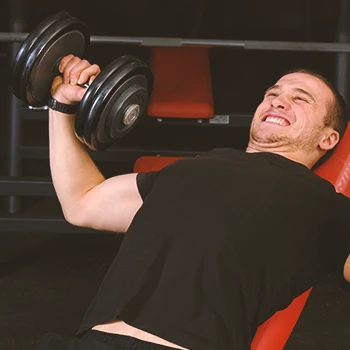
- 5 sets of 3 to 6 repetitions of weighted dips, barbell inline on the bench press
- 3 sets of 6 to 8 repetitions of bent-over rows or weighted chin-ups
- 3 sets of 8 to 10 repetitions of barbell close-grip bench press or barbell skull-crushers
- 3 sets of 8 to 10 repetitions of dumbbell or barbell Curls
- 3 sets of 8–12 repetitions of weighted crunches/weighted hanging leg raise
Lower
- 5 sets of 3 to 6 repetitions of barbell low box squats or sumo deadlifts
- 3 sets of 8 to 15 repetitions of dumbbell split squats or lunges
- 3 sets of 8 to 15 repetitions of Reverse hyperextensions or good mornings
- 3 sets of 8–12 repetitions of cable woodchoppers or side bends
Push Pull Split

This split separates the body in terms of "pulling" and "pushing."
- The push workout targets all upper and lower body muscle groups involved in "pushing" activities. For the upper body, this implies the triceps, chest, and shoulders, and the lower body, calves, and quads.
- The pull workout targets all upper and lower body muscles involved in "pulling" activities. This includes the back and biceps for the upper body. For the lower body, hamstrings.
You would then switch between the push and pull workout routines, completing Push/Pull/Push one week and Pull/Push/Pull the following. You continue to alternate in this manner from week to week.
Week 1
- Monday: Push
- Tuesday: Off
- Wednesday: Pull
- Thursday: Off
- Friday: Push
- Saturday: Off
- Sunday: Off
Week 2
- Monday: Pull
- Tuesday: Off
- Wednesday: Push
- Thursday: Off
- Friday: Pull
- Saturday: Off
- Sunday: Off
Regarding schedule, the version indicated above is the most popular, with workouts completed every other day and 2 days off at the end.
The particular days you chose don't matter as long as that specific pattern is kept intact.
The split allows you to exercise each body part twice a week.
The workouts:
Push

- 4 sets of 4 to 6 repetitions of dumbbell bench press or incline barbell bench press
- 3 sets of 6 to 10 repetitions of dumbbell seated shoulder press or barbell push press
- 3 sets of 6 to 10 repetitions of barbell close-grip triceps extensions or barbell tricep extensions
Pull
- 4 sets of 4 to 10 repetitions of deadlifts or snatch grip deadlifts
- 3 sets of 6 to 10 repetitions of pull-ups or cable rows
- 3 sets of 8 to 12 repetitions of dumbbell seated bicep curls or barbell preacher curls
Classic Bodybuilder Splits

This one prioritizes your three major muscle groups, with the lesser muscle groups augmenting them.
- Monday: Chest and Triceps
- Tuesday: Off
- Wednesday: Back and Biceps
- Thursday: Off
- Friday: Legs and Shoulders
- Saturday: Off
- Sunday: Off
The above is the best technique to divide the major muscle groups. On the other hand, you might build the split differently if you have specific muscles that are lagging and require additional attention (for instance, your shoulders or legs).
- Monday: Chest, Shoulders, and Triceps
- Tuesday: Off
- Wednesday: Back and Biceps
- Thursday: Off
- Friday: Legs
- Saturday: Off
- Sunday: Off
As with the Push Pull Leg Split, taking one day off between upper body training days and two following the leg day is preferable, as leg exercises are typically the most demanding on the body.
The following exercises are an impactful group of workouts you could do on all three days to target the preferred muscle group.
Note: These exercises only contain the working load sets. We usually recommend that you warm up adequately before beginning the workout.
The workouts:
Chest, Shoulders, and Triceps
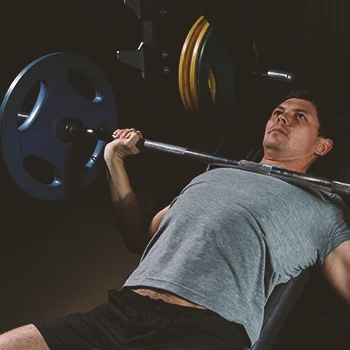
- 3 sets of 6 to 8 repetitions of bench press
- 3 Sets of 8 to 15 repetitions of Incline Dumbbell Bench Press
- 3 Sets of 8 to 15 repetitions of cable crossovers
- 3 sets of 8 to 10 repetitions of standing overhead press
- 3 sets of 8 to 15 repetitions of lateral raises
- 3 Sets of 8 to 10 repetitions of skull crushers
- 3 sets of 8 to 15 repetitions of triceps rope pushdown
Back and Biceps
- 3 sets of 8 to 10 repetitions of the seated cable row
- 3 sets of 8 to 10 repetitions of lat pulldowns
- 3 sets of 8 to 15 repetitions of bent-over fly dumbbell
- 3 sets of 8 to 10 repetitions of back hyperextension
- 3 sets of 8 to 15 repetitions of bicep barbell curls
- 3 sets of 8 to 10 repetitions of hammer curls
Legs
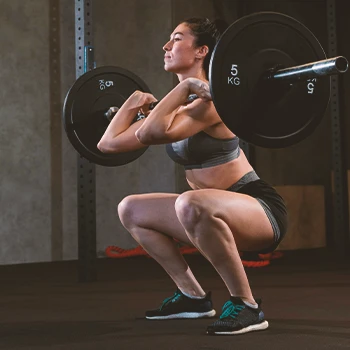
- 3 sets of 8 to 10 repetitions of barbell squats
- 3 sets of 8 to 10 repetitions of leg press
- 3 sets of 8 to 10 repetitions of leg Extension
- 3 sets of 8 to 10 repetitions of leg curls
- 3 sets of 8 to 10 repetitions of standing calf raises
Adjust the repetitions and loads to your ability and fitness level.
Rest intervals between sets will vary depending on your weight training goals and how complex each set is, but as a rule of thumb, I recommend resting 1:30–3 minutes between sets.
If you're starting, you should avoid starting too heavy. Muscle gain is a marathon; you cannot make any gains if you are injured.
Warm-up Sets

The exercises with the various working sets we propose are all included in the exercise splits provided above.
Nonetheless, we always advocate adequately warming up for your activity and each movement.
You should do some exercise-specific warm-up, especially for large lifts, to prepare your system for the hard lifting as recommended by the National Institutes of Health [1].
"Warm-up raises the temperature. It raises the temperature of the active muscles, which enhances performance during high-intensity activity."
- Tom Cowan, Exercise Physiologist
Warming up also allows you to perfect the workout form without the heavy weight.
Warm up with at least two or three light sets of low weights and gradually work your way up.
For example, if you're warming up for squats, you may begin by squatting simply on the bar, then gradually adding weights until you hit your working weight.
If your working weight is less than that of a standard-sized Olympic barbell, you may use a pair of dumbbells to warm up with smaller weights.
Aim for 2-3 warm-up sets and gradually raise weights with a sufficient difference between sets.
What Is a 3-Day Workout Split?

Are 3-Day Workout Splits Effective?

How About If You Are Looking To Be Leaner?
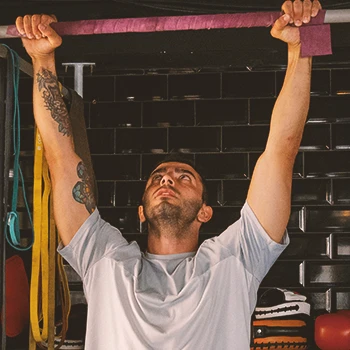
Weight loss fundamentally requires burning more calories than consumed, coupled with sufficient rest for full recovery, as highlighted in Frontiers of Psychology research [2].
Popular diets like Keto, Paleo, Vegan, and Carnivore focus on calorie intake.
However, the simplest weight loss strategy is reducing calorie consumption, as it's easier than burning equivalent calories through exercise.
Avoid eating back the calories burned and incorporate fat-burning foods into your diet.
The 3-day workout split effectively aids in achieving leanness by ensuring adequate exercise and calorie burn, leading to weight loss.
Read More:
Which 3-Day Workout Split Is Right for You?

Choosing the right 3-day split depends on your goals, whether it's muscle gain, strength increase, or weight loss.
The Best 3-Day Exercise Split for Muscle Building
For muscle building, classic bodybuilder and push-pull leg splits are highly effective, offering increased volume per muscle group per session.
In my experience coaching beginners, full-body and upper/lower splits are more suitable for initial muscle development.
They require less volume per muscle group but involve more frequent engagement, fostering better muscle growth for novices.
The Best 3-Day Exercise Split for Muscle and Strength Gain
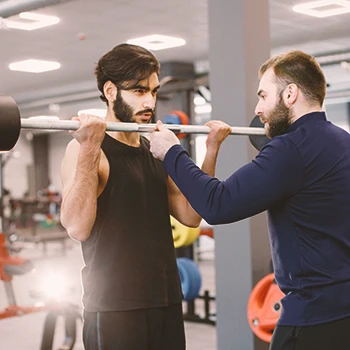
The Best 3-Day Exercise Split for Strength
Any split can benefit strength development, but the Push Pull Leg, Upper/Lower, and Classic Bodybuilder splits are perhaps the greatest.
The 5x5 training regimen is also effective for beginners who wish to enhance their strength.
All you need to do is center your workouts on extensive compound exercises and gradually increase the weight loads on these movements over your training phase.
The Best 3-Day Exercise Split to Lose Fat

The upper/lower and full-body split is the ideal three-day split to lose fat since these workouts optimize calorie burn.
That being said, fat reduction truly boils down to food, since even if you burn many calories with weightlifting and aerobic activities, you may consume that many calories in one sitting.
To lose fat, you must consume fewer calories than you burn daily.
Benefits of a 3-Day Workout Split

- There are plenty of good scheduling alternatives available. There's a misconception that effective 3-day exercise splits are limited, but in reality, there are numerous viable options. From my coaching experience, the flexibility to align these splits with personal schedules, whether on weekdays or weekends, is a significant advantage.
- It's convenient. Three-day splits are more manageable and sustainable compared to 4-6-day routines, which often lead to inconsistency and missed sessions.
- Training frequency may be optimized with 3-day splits. Research in Sports Medicine supports the efficacy of training each body part two to three times weekly, rather than just once, which is perfectly suited to 3-day splits [3]. This frequency means training each muscle group every 2nd to 5th day, optimizing muscle engagement and growth.
- It is conducive to recovery. A well-timed 3-day split aids in recovery, preventing the counterproductive effects of overtraining. This balance between exercise and recovery is crucial for steady progress and is a key reason why I often recommend 3-day splits to my clients.
FAQs
Is a 3-Day Split Workout Enough?
Three-day exercise splits are significant because they provide a suitable amount of exercise to help you gain muscle and become stronger while also allowing you to recuperate and prevent burnout earlier in your lifting activity.
What Is the Most Successful Workout Split?
The push-pull legs split is the most effective exercise split since it trains all related muscles in the same workout. This implies that you obtain the most motion overlap within the same program, and the muscle groups being exercised benefit from this overlap overall.
What Is the Arnold Split Workout?
The Arnold split is a six-day exercise schedule in which you train your shoulders, arms, chest, back, and legs twice a week. It's a muscle-building regimen to help you gain muscle mass and enhance your overall physique.
References:
- https://pubmed.ncbi.nlm.nih.gov/25153744/
- https://www.ncbi.nlm.nih.gov/pmc/articles/PMC6015912/
- https://link.springer.com/article/10.1007/s40279-016-0543-8
About The Author
You May Also Like
